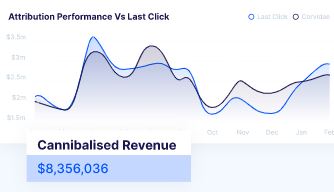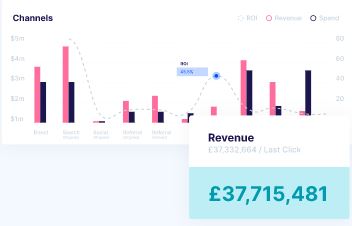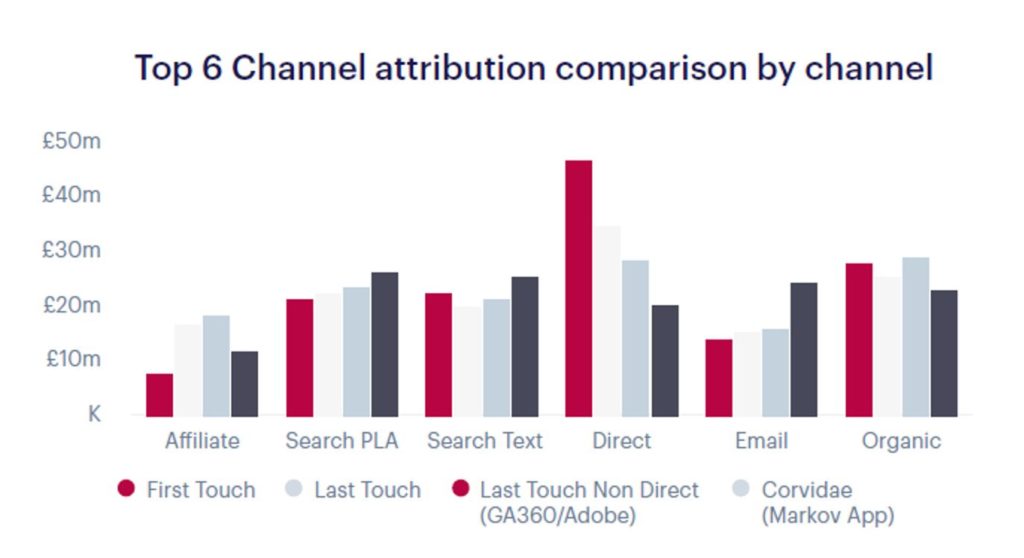How to Ensure Your Attribution Solution is Really Fit For Purpose

More than ever before, marketers are required to do more with less and prove that their marketing mix is effectively acquiring customers at the lowest costs possible.
But, having an attribution solution that’s holding you back rather than lighting the way to improved CPAs and ROI only makes this more difficult than it needs to be.
And, again, the evidence is that marketers are struggling to do this in practice. According to BCG Consulting 9 out of 10 marketers say they are “leaving money on the table” because they have failed to develop the capabilities they need to accurately assess what is working for them.
And this is echoed by research from QueryClick, indicating that over 90% of those responsible for improving marketing ROI in the UK are unable to get to sophisticated attribution models that meet their specific marketing needs.
If you don’t have effective attribution in place, then it’s a fairly safe bet that you also don’t know what is – and just as importantly isn’t – working across your marketing mix. So, assessing and improving “true” marketing performance isn’t really possible for you.
Why “off the shelf” solutions no longer cut it
Effective attribution really matters to marketers.
Accurate data gives them the power to make informed data-driven decisions about the channels in their marketing mix and how budget is best spent to increase ROI and drive growth for their business.
So, if you’re relying on “off-the-shelf” solutions like GA360 or Adobe Analytics – do you know how accurate your data really is?
Without getting overly technical, the majority of digital marketing data is “deterministic” and collected using a pixel working in tandem with a cookie. A variety of data including dwell time, previous site visited and repeat visits is captured in this way.
And this is the point at which the world’s most commonly used analytics packages – like the ones provided by Google and Adobe – start to break down and generate incorrect or incomplete data.
Source: Programmatic Marketing in the 2020s: What the Future Has in Store
35% of marketers say flawed Last Click reports are their primary marketing challenge.
The cause? What is being measured is a device accessing a web property. Not the actual person – a person who will typically use multiple devices in the course of even simple transactions. Cookies are supposed to enable ‘joining’ of multiple sessions generated by devices interacting with a web property.
Unfortunately, in reality, they do a pretty poor job. And if you combine this with the flawed approach of using Last Click attribution – the default attribution method for Google Analytics – then you can start to see the cracks appearing.
Rebuilding your data is key
The chart below shows that using deterministic analytics data only (i.e. pixel and cookie data) to create a picture of an individual’s behaviour behind their multiple devices generates data that is around 80% incorrect.
Even where advanced session joining algorithms are employed (a feature of GA360).

In this instance, Corvidae – QueryClick’s attribution software – used a combination of advanced econometrics techniques and Machine Learning to effectively “rebuild” the core clickstream data from Google Analytics. Which was then shown to be 80% incorrectly attributed.
It’s only by fixing this broken data that we have then been able to unbundle the data held within Google and Facebook’s walled gardens and join these data silos together to discover differences in revenue source reporting of greater than 50%!
3 key views that rebuilt data can provide
So, data is foundational in all of this but what can you expect from your rebuilt data?
Here are just some of the report views that are opened for you.

Visit Level Attribution
Gain a real insight into the user behind every conversion so you know which individual touchpoints on the extended customer journey hold the most value.
Attributed Performance vs. Last Click

A key report that is able to show how an accurate attributed view changes the picture of your channel effectiveness.
Incorporating offline data – and using an extended 2 year lookback window that enables you to capture the impact of the entire customer journey – to see how revenue really stacks up.
Channel Contribution and Effectiveness

A key report that provides a single, accurate view of attributed revenue and media cost across all channels – and enables you to really dig into the effectiveness of all aspects of your marketing activity. And to drive overall conversions at the lowest ROI.
What does this looks like in practice?
Let’s take a look at a real-world scenario below…
In this case, a data rebuilding approach was used to assess and more accurately attribute revenue for a well-known Online Fitness Retailer.

As you can see below, compared to Last Click Non Direct (the rules based model used by GA 360 and Adobe by default), channel attribution has changed by £39.9m.
Given total turnover is only £136.7 million across the measured channels, this radically alters the ROI implications of media spend, particularly in Paid Search and PLA (Paid Search Shopping Ads).
And it is this level of powerful attribution capability that you should be demanding of your own attribution solution.
Discover how to solve your challenges with effective attribution
We’ve created six Marketing Attribution Use Cases that explore why effective marketing attribution is key to solving a number of challenges faced by today’s marketers: from justifying marketing spend to fixing inaccurate analytics. To learn more, download the eBook below.
Marketing Attribution Use Cases
Own your marketing data & simplify your tech stack.
Have you read?
I have worked in SEO for 12+ years and I’ve seen the landscape shift a dozen times over. But the rollout of generative search engines (GSEs) feels like the biggest...
As you will have likely seen, last week Google released the March 2024 Core Algorithm Update. With it, comes a host of changes aiming to improve the quality of ranking...
After a year of seemingly constant Google core updates and the increasingly widespread usage of AI, the SEO landscape is changing more quickly than ever. With this rapid pace of...



